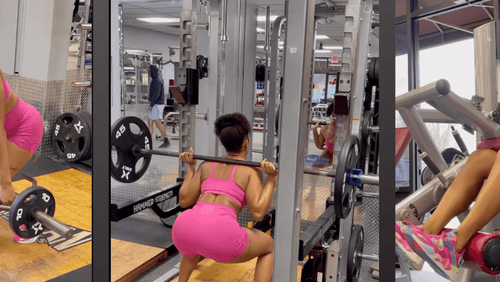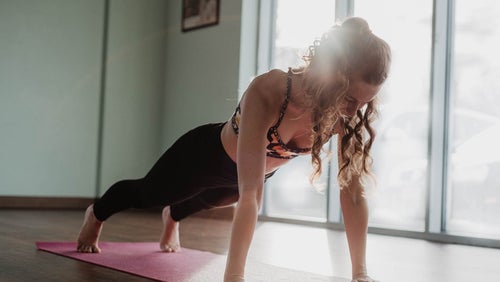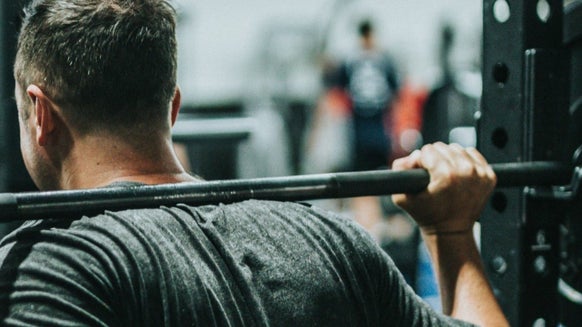The Importance of Correct Form

Sometimes it can be too easy to fall into bad habits when working out, especially when it comes to form. It’s very common to see people cutting corners for the sake of ease and speed.
But correct technique is vital if you want to avoid injury. Exercise should be something you enjoy and can do without putting yourself in the way of unnecessary harm. Whether you're brand new to exercise or just need a quick refresher, here's everything you need to know about proper form.
What is Proper Form?
Basically, proper form is performing exercises correctly to make sure you’re not putting yourself or anyone else at risk of injury. It may be tempting to lift heavier weights and hit new PBs as fast as possible, but when it comes to working out, having proper form can have a whole host of benefits short and long term.
Why is Proper Form Important?
There are loads of reasons why proper form is important. Here are our top six reasons you should invest your time and energy into holding onto correct form:
Avoid injury
Exercise is supposed to test your body and push you to your limits, but that doesn't mean it should be painful or that you should risk injury. Ensuring you have proper form allows you to progressively overload your muscles without putting yourself in harm’s way.
Get the most out of your exercise
If you're putting in the hard work, you want to get the results. Correct form ensures you are working each muscle to its maximum potential and that you're getting the most from every workout.
Reach your goals faster
Save your energy
When working at higher volumes or larger sessions, having proper form makes things far easier. Using the correct form makes your body more efficient, meaning you can work harder for longer and use your energy better.
Breathe correctly
You need to make sure you’re getting enough oxygen while exercising, and correct form can help you do this.
Transferring form to everyday life
When working out with proper form, you build better habits that can be transferred into everyday life, which can help prevent injury or accidents. For example, if you need to lift some boxes at work, you'll be better able to do this safely if you've been training with proper form.
How Can I Tell if My Form is Bad?
When it comes to knowing if you're using proper form when working through an exercise, the first place to start is trusting how your body feels. If something doesn't feel right or there is pain, the likelihood is that your form is off. Trust your body and how things feel. If you ever feel uncomfortable or in pain, stop and rest, or get some help to check your form.
If you're grinding it out in the gym but not seeing much progress, can't seem to lift any heavier than when you started, or are severely overtraining but not feeling sore, it’s likely down to inefficient form.
It's also possible to tell if your form is off in other ways too. If you're struggling to feel the muscle you're working contracting, aiming for quantity instead of quality, unable to lift heavy weights consistently, or stuck at the same weight — these are all signs of bad form.
What's the Best Way to Correct My Form?
If you're not sure where to start, here are a few things you can do to check and correct your form:
1. Work out with a friend or spotter
Having a training partner can be a great way to keep yourself in check. They can help you check your form and make sure you're performing the exercises correctly.
2. Have a session with a PT
If you need more in-depth help, consider having a one-to-one session with a PT. They can help you with technique and give you some helpful tips.
3. Film yourself
If you don't have a buddy or a PT to turn to, try taking some videos of yourself while working out and review them afterwards. There are many helpful form videos online that you can use to compare.
4. Slow down and focus on quality, not quantity
It's tempting to try and smash out large reps, but sometimes it's better to take things back to basics and slow down. Aim to do a few good form reps before you build them up again. As soon as you feel your form breaking, stop and rest.
5. Use your mind-body connection
When performing an exercise, really think about the muscles you're working. By ensuring you're concentrating on the working muscle, you'll engage it more effectively.
Take Home Message
Working on your form can bring so many benefits to your workout progress. Not only can it reduce the risk of injury, but it can also help you get results faster, train harder, and make your training more efficient. You may also see yourself transferring new skills into everyday life.
Want more training advice?
READ THESE NEXT:

5 Time Under Tension Exercises for Leg Day
These 5 Time Under Tension exercises will have your legs thanking you, even if you can't walk away afterwards...

How to Start Working Out | A Beginner’s Guide
Everything you need to know to meet your goals.

How Long Do You You Need To Hold A Plank? | Everything You Need To Know About Planks
There's a lot more to planks than meets the eye...










